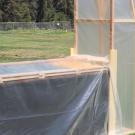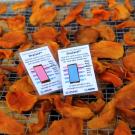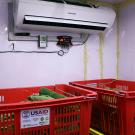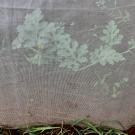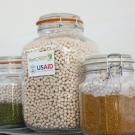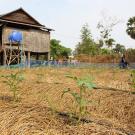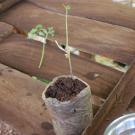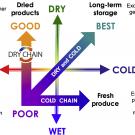The chimney solar dryer is built with low-cost materials and combines heat collection with constant airflow for efficient drying. Designed by UC Davis researchers for the Horticulture Innovation Lab, the dryer allows farmers and others to use the sun to efficiently dry fruits, vegetables and other foods for long-term storage. Farmers can add value to crop surpluses and extend access to fruits and vegetables throughout the year.

